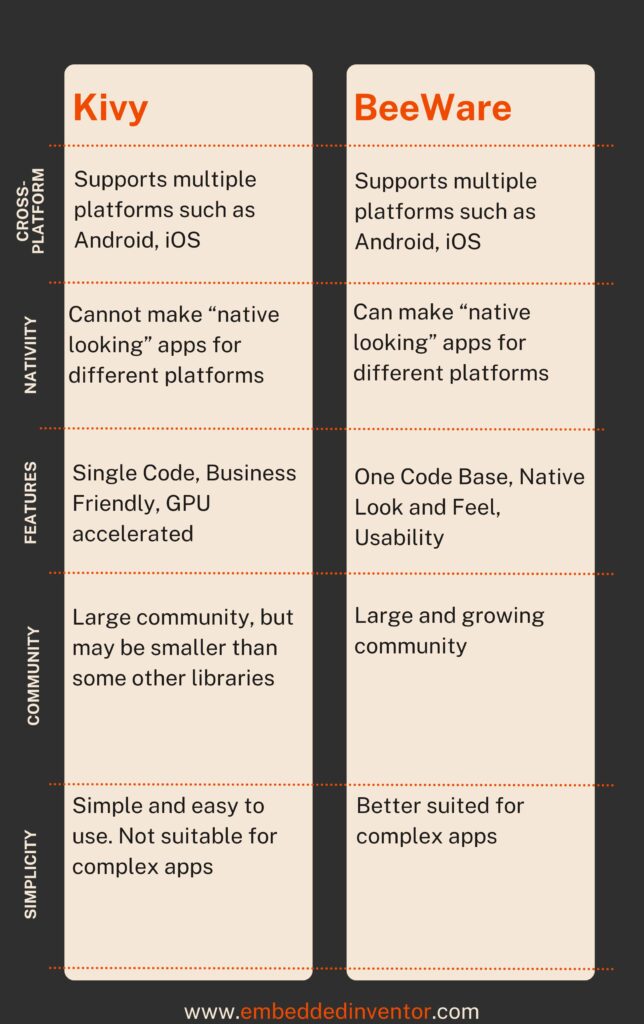In this article, we will look at the best frameworks to get started with Android application development using Python.
Kivy
Kivy is an open-source library for Python used for the development of cross-platform GUI applications.
This allows you to write pure Python graphical applications that can run on all the main desktop platforms like Windows, Linux, and MacOS. And of course, they run on iOS and Android as well.
It is known for its custom UI toolkit. Kivy has its own custom UI toolkit with its own versions of buttons, text labels, etc. Kivy does not use the native platform UI controls.
This toolkit works the same between Android, iOS, Linux, Raspberry Pi, etc.
On one hand, you can bring consistency to your application across multiple platforms. On the other hand, your application would not look or feel like a native app.
For instance, your Android app might not feel like an Android app, the same goes for iOS.
Note: Speaking of iOS, a plus point of using Kivy is that you can make an iOS app without having to learn the Swift application.
This might not be a problem depending on the type of app you are going to create. For instance, if you’re planning to create a game, the nativeness of the UI won’t be that important. At the same time, this will have a big impact on other types of apps.
Read more about Kivy at kivy.org
BeeWare
This is another mobile development framework that has a set of tools and an abstraction layer developers can utilize to create mobile and desktop applications.
Also, BeeWare allows you to create native-looking applications, unlike Kivy. This means that the UI controls you will be using to create your application will exactly be the same buttons, text labels, check boxes, etc provided by the underlying operating system allowing you to create a 100% “native looking” app for each platform.
This is the primary difference between these 2. BeeWare allows you to use the native UI toolkit for each platform whereas Kivy has its own UI toolkit that is the same across all the platforms.
But just like any platform, BeeWare has its disadvantages as well, and this is that BeeWare is not as mature as Kivy. It is relatively new. This serves as a problem for developers as you might have some extra work on your plate due to bugs, API changes, patches, and lack of features.
You can find out more about BeeWare here: beeware.org
Finally, here’s a table to help you decide:

In conclusion, BeeWare and Kivy are the 2 best mobile application development frameworks. The real difference between them is found in the look and feel of the final product.
Whilst it’s not possible to say unanimously which framework is better, we can still spot the pros and cons of each.
BeeWare is the best pick if you do not want to lose the native theme in your application.
Whilst Kivy cannot do that, it is a more mature framework and can be a good choice if the native themes are not necessary in your application.
And let’s end with that!
I hope you got the framework you’re looking for! Good luck with your application!
Here are some other articles that you may find helpful!
Related Articles
Is Python A Good Option for Android App Development?
Can Python be used for Android app development
Thanks to Namazi Jamal for his contributions in writing this article!

